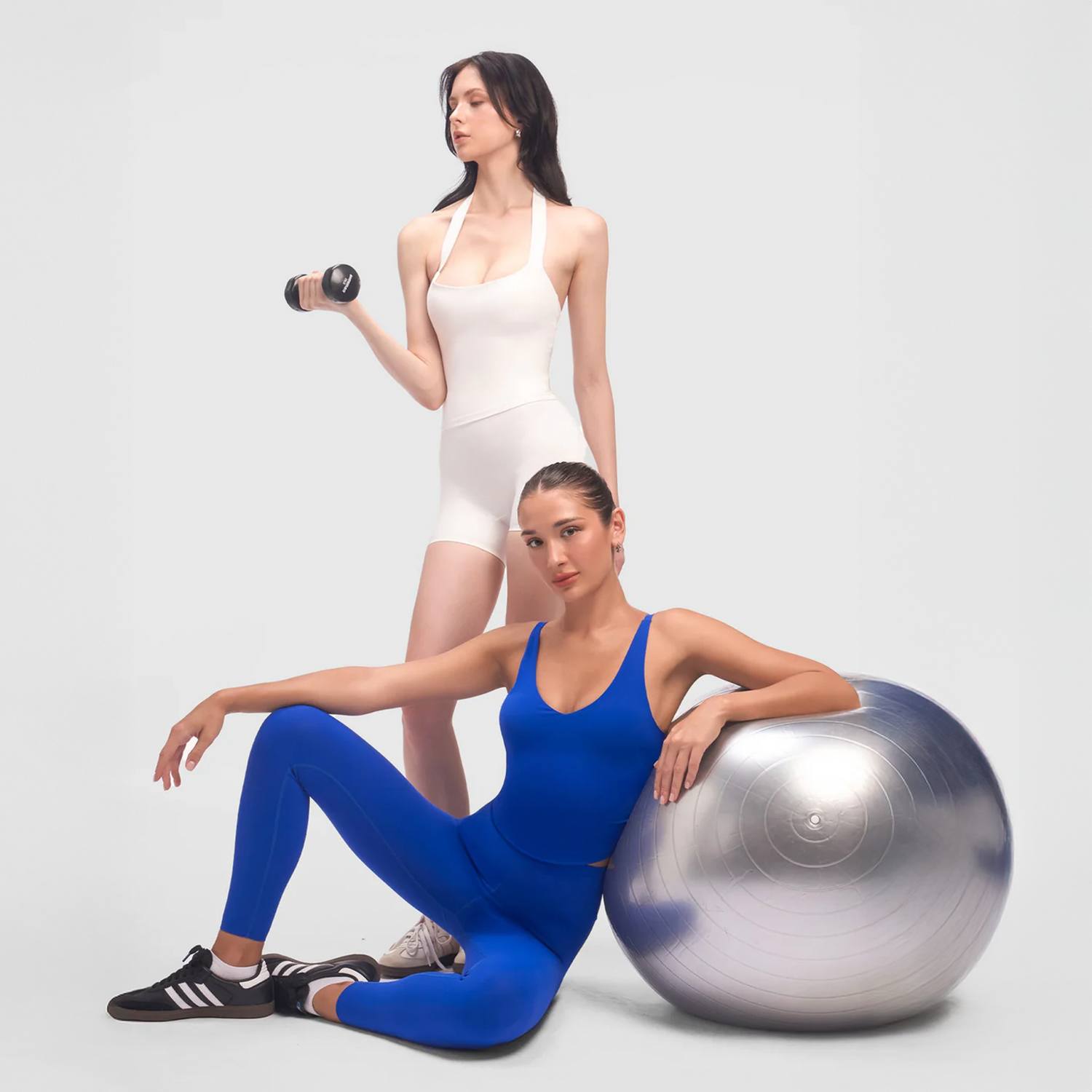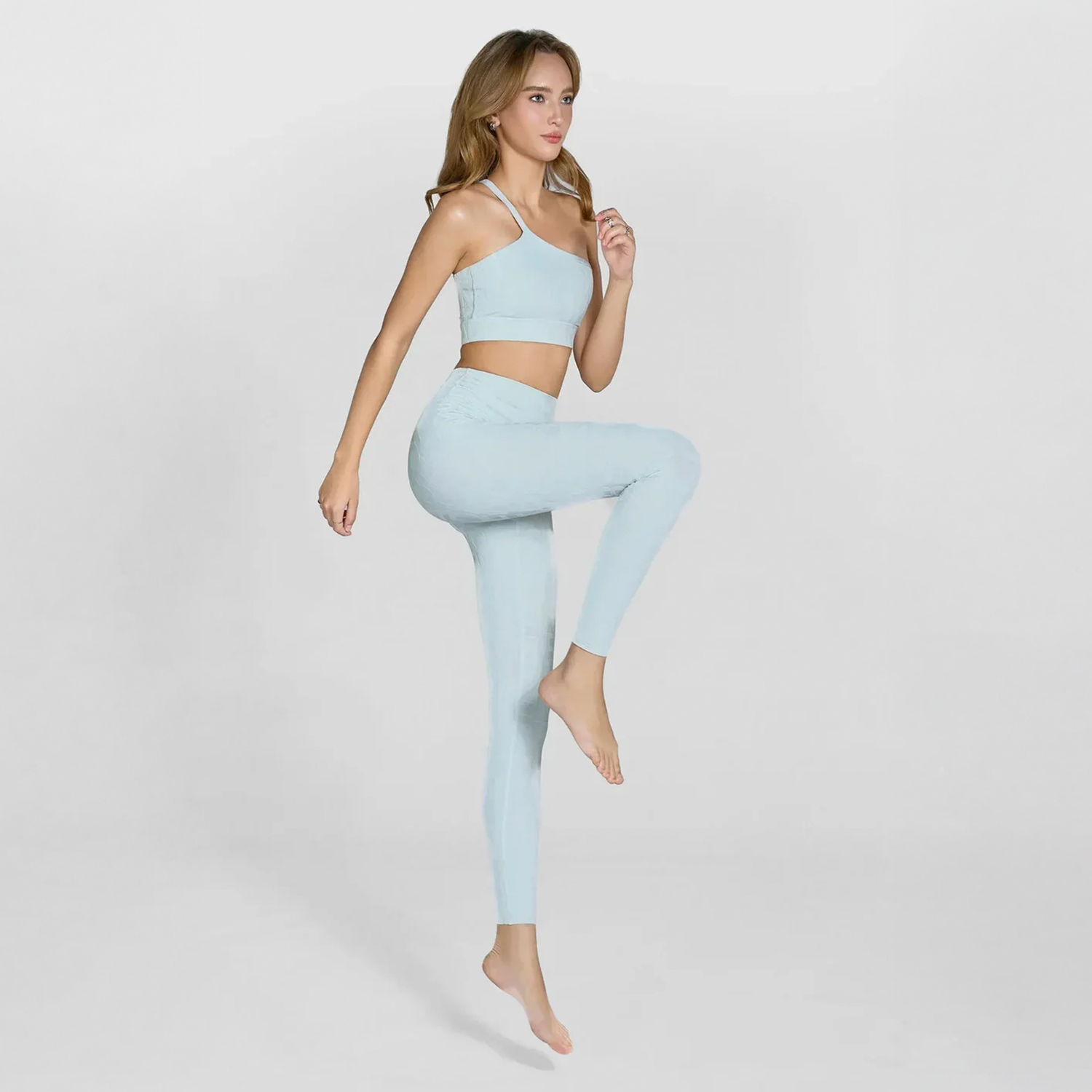Aerial Yoga is becoming a popular fitness trend thanks to its unique combination of art and athleticism. Not only does it help the body become more flexible and toned, but it also brings a sense of lightness, relaxation, and mental release after a long day.
So, what exactly is Aerial Yoga? How does it differ from traditional yoga, and what specific health benefits does it offer? Let’s explore all the details with Olaben below!
1. What Is Aerial Yoga?
Aerial Yoga, also known as Anti-Gravity Yoga, is a modern variation of traditional yoga created by Christopher Harrison in 2007.
The key difference of Aerial Yoga is that practitioners perform yoga poses while being suspended in the air using a special silk hammock that hangs about 2–3 meters above the ground.
This discipline combines elements of:
- Traditional Yoga: Focuses on breath control, balance, and mindfulness.
- Pilates: Strengthens the core muscles and improves flexibility.
- Dance and Gymnastics: Adds grace, artistry, and aesthetic flow to every movement.
Thanks to this combination, Aerial Yoga allows practitioners to enjoy the feeling of “flying” while engaging and strengthening the whole body without putting pressure on the joints or spine.

2. Benefits of Aerial Yoga
Practicing Aerial Yoga regularly not only enhances your physical health but also brings remarkable mental benefits:
- Improves flexibility and tones the body: Performing aerial movements requires full-body coordination, which strengthens muscles — especially in the core, hips, and shoulders.
- Reduces spinal and joint pressure: Being suspended helps distribute body weight evenly, easing tension on the spine and knees — ideal for those with back pain or sedentary jobs.
- Boosts blood circulation and heart health: Inverted poses improve blood flow to the brain, enhance cardiovascular endurance, and help the body fully relax.
- Reduces stress and promotes mindfulness: Aerial Yoga doubles as a form of meditation. Focusing on breathing and body awareness in mid-air brings calmness, reduces anxiety, and improves sleep quality.
- Supports digestion: Twisting and bending movements stimulate the digestive organs, helping to relieve bloating, constipation, and indigestion.
- Improves posture and alignment: Suspension allows the spine to decompress naturally, resulting in a straighter posture and a more confident appearance over time.
3. Basic Aerial Yoga Poses for Beginners
If you’re new to Aerial Yoga, start with these simple, safe poses. They help you get comfortable with suspension while building strength and balance.
3.1. Fish Pose (Matsyasana Aerial)
How to do it:
- Sit on the hammock so that your mid-back rests against it.
- Gently lean back, letting the hammock support your back and neck.
- Relax your arms to the sides or stretch them overhead to open your chest.
- Hold the pose for 30 seconds to 1 minute while breathing deeply and evenly.
Benefits:
- Opens the chest and lungs, improving breathing capacity.
- Stretches the shoulders, neck, and upper spine.
- Relieves stress and brings a sense of calm and relaxation.

3.2. Tree Pose (Vrksasana Aerial)
How to do it:
- Stand upright while lightly holding both sides of the hammock for balance.
- Place one foot on the inner thigh of the opposite leg (avoid the knee area).
- Once stable, raise your hands overhead or bring them together at your chest.
- Hold for 20–30 seconds, then switch sides.
Benefits:
- Improves balance and concentration.
- Strengthens the legs, especially the calves and inner thighs.
- Stabilizes the hips and enhances posture.

3.3. Downward-Facing Dog Pose (Adho Mukha Svanasana Aerial)
How to do it:
- Start standing with both hands placed on the hammock at hip height.
- Step back and lower your chest until your arms and back form a straight line.
- Let your head relax between your arms, keeping your breathing steady.
- Hold for 30 seconds to 1 minute, then slowly return to standing.
Benefits:
- Stretches the back, shoulders, and hamstrings.
- Promotes blood circulation to the brain, relieving tension and fatigue.
- Improves posture and releases pressure from the neck and spine.

4. Who Should Practice Aerial Yoga?
Aerial Yoga is suitable for:
- People looking to reduce stress and improve body tone.
- Those suffering from back, neck, or shoulder pain.
- Yoga practitioners who want to explore a new, challenging experience.
However, Aerial Yoga is not recommended for:
- Pregnant women.
- People with heart disease, high blood pressure, or eye conditions (e.g., retinal issues, cataracts).
- Anyone recovering from bone, joint injuries, or recent surgery.
5. The Differences Between Aerial Yoga and Traditional Yoga
Although Aerial Yoga is built upon the foundation of traditional Hatha Yoga, the two forms differ in various aspects — including the practice environment, physical engagement, difficulty level, and benefits.
| Criteria | Traditional Yoga | Aerial Yoga |
|---|---|---|
| Practice environment | Performed on the floor with a yoga mat, relying on natural gravity for balance and body control. | Practiced in the air using a silk hammock suspended from the ceiling, allowing floating, swinging, and inversion movements. |
| Equipment | Requires only a mat, occasionally yoga blocks, straps, or cushions. | Uses a durable silk hammock securely attached to the ceiling; a mat underneath ensures safety. |
| Body impact | Full body weight is supported by the ground, strengthening muscles and endurance. | Anti-gravity movements decompress the spine and reduce pressure on joints and the lower back. |
| Feeling during practice | Calm, meditative, and grounding — focusing on breath and alignment. | Free, floating, and artistic — blending acrobatics, strength, and grace. |
| Difficulty level | Accessible to all levels, including beginners and seniors. | Requires guidance from certified instructors due to inversion and aerial poses. |
| Main benefits | Improves strength, flexibility, breathing, and mindfulness. | Decompresses the spine, enhances circulation, relieves back pain, and promotes relaxation. |
| Training goal | Focuses on inner peace, breath control, and mind-body connection. | Focuses on physical release, full-body relaxation, and self-discovery. |
| Popularity | Widely available in most yoga studios. | Less common, mainly found in specialized Aerial Yoga studios. |
Conclusion
Aerial Yoga is more than just a fitness trend — it’s a graceful dance between strength, balance, and mindfulness. Each movement, supported by the silk hammock, allows you to stretch deeper, breathe more freely, and reconnect with your inner calm. It’s a practice that uplifts not only your body but also your spirit.
And to fully enjoy every flow and inversion, wearing comfortable, flexible women’s yoga wear can make a world of difference. The right outfit moves with you — letting you feel confident, supported, and completely free in every pose.
If you’re seeking a fresh, inspiring, and holistic way to nurture both body and mind, Aerial Yoga is the perfect path to begin your journey toward balance, confidence, and self-love.















